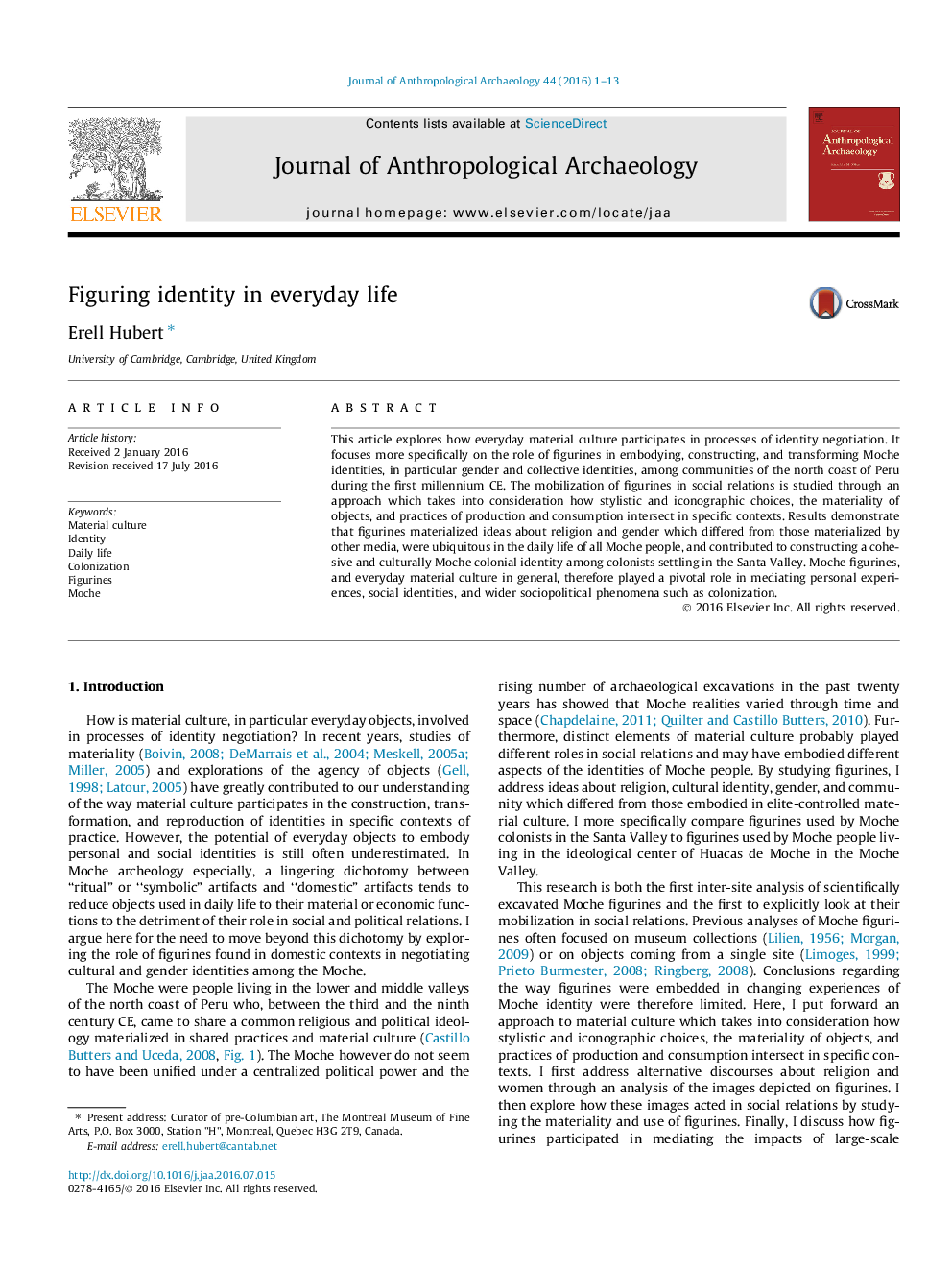| کد مقاله | کد نشریه | سال انتشار | مقاله انگلیسی | نسخه تمام متن |
|---|---|---|---|---|
| 1034838 | 1377869 | 2016 | 13 صفحه PDF | دانلود رایگان |
• Daily interactions with material culture participate in identity negotiation.
• Iconography, the materiality of objects, and social practices are interrelated.
• Moche figurines were used in shared ritual practices emphasizing the role of women.
• In the Santa Valley, figurines contributed to creating a cohesive Moche community.
This article explores how everyday material culture participates in processes of identity negotiation. It focuses more specifically on the role of figurines in embodying, constructing, and transforming Moche identities, in particular gender and collective identities, among communities of the north coast of Peru during the first millennium CE. The mobilization of figurines in social relations is studied through an approach which takes into consideration how stylistic and iconographic choices, the materiality of objects, and practices of production and consumption intersect in specific contexts. Results demonstrate that figurines materialized ideas about religion and gender which differed from those materialized by other media, were ubiquitous in the daily life of all Moche people, and contributed to constructing a cohesive and culturally Moche colonial identity among colonists settling in the Santa Valley. Moche figurines, and everyday material culture in general, therefore played a pivotal role in mediating personal experiences, social identities, and wider sociopolitical phenomena such as colonization.
Journal: Journal of Anthropological Archaeology - Volume 44, Part A, December 2016, Pages 1–13
